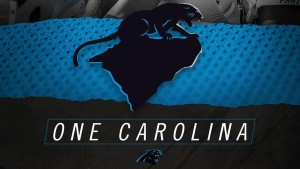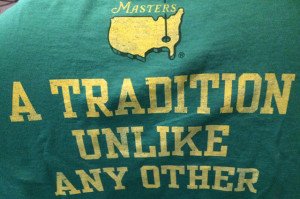3 Things to Consider when Taking Your Brand Name Global
Most organizations are looking for their brand to grow throughout its lifetime, and for some, that anticipated (and hoped for) growth includes expanding outside of their home region or country. However, this growth can come with a downside for the brand if certain aspects, specifically the brand name, aren’t suited to travel. Everything is going well – the brand is growing, new markets are identified, the stage is set for an initial foray into the global market – until the brand name falls flat once it leaves the home market.
So how does a brand ensure its success both locally and globally? Here are three areas of consideration to take into account when creating a brand name that will be used on a global scale:
- Legal: Make sure your brand is legally able to extend outside of your current market and that you won’t run into legal opposition using your brand name in another region or country. For instance, a local business could use parts of the brand name of a larger company, which wouldn’t cause too many problems until they tried to go national or global. Then they would almost certainly face opposition from the larger organization, which would result in time and costs spent in working out any issues that arise. Additionally, there could be parts of a brand name that pose no legal issues in the originating country, but when expanding to other nations face differing laws.
- Linguistics: Be conscious of how the brand name translates in other languages. More times that most would think, one or more words in a brand name translate very poorly into the language of a potential new market – everything from profanities to translations that don’t bode well for the business or product involved.Don’t wait until you see the negative reaction or end up on a “worst name mistakes” list to properly do the research necessary to avoid this problem. Also, keep in mind that knowing exactly where a brand might grow is rare – in this case, it’s definitely better to be safe than sorry and research the linguistic aspect of a potential brand name in as many languages as possible.
- Growth/Expandability: Once you expand, consider the impact on the business. Ideally the business will grow and you need to make sure the brand name isn’t so limiting that it impedes this progress.
Just like any aspect of a brand, a name carries valuable weight with an audience. Often, it is the first interaction they have with the overall brand, so as the brand grows, so does the potential audience. This also increases the importance of a high-quality brand name – one that will have the same impact whether it is known to 100 people or 100 million.
Creating a global-friendly brand name shouldn’t come as an afterthought or be consigned to a reactive strategy. When developing a brand name, work under the assumption that there exists a real possibility that it will be utilized on a global scale. That way, you can avoid hoping your established brand will have success when it expands beyond its current borders and find a new, global audience.
Learn more about building your best brand by downloading this FREE webinar, "Identifying The Opportunities In Your Brand Portfolio - Are You Capitalizing On Every Potential Business Opportunity Your Portfolio Provides?"
Living the Brand: How to Build a Strong Brand Persona
Why do we gravitate towards certain brands while actively avoiding others? What is causing the rise in “lifestyle” branding? When does a brand become something more than just a brand?
The answers to these questions could be the basis for an entire blog series, but for this one, we are going to focus on the common theme that runs throughout all of the answers: creating a brand that connects with your audience.
This strategy fits mainly with corporate and organizational branding, with less of an impact toward individual product branding. While those brands can and should still work toward emotional connectivity, the organization and corporate brand presents a more overarching opportunity to become more than just a brand to its audience.
When creating these types of brands, take stock of which characteristics rise to the top with the least amount of effort. A brand persona should come naturally, as it represents a brand’s very core of characteristics, ones that will easily be identified as being constructed and unnatural to the overall branding strategy. For smaller organizations especially, creating a brand that mirrors your personality and can become an extension of yourself can help drive it forward much more effortlessly.
It is in our nature to connect and prioritize those things we relate to, and those things we enjoy. Brands are the same way. It’s why emotional connectivity is so important for brands – their consumers will instinctively be drawn to their brand if there exists an emotional or personal connection.
From a brand perspective, it’s difficult to take steps toward connecting with the audience and presenting a brand that holds certain characteristics if it doesn’t resonate with who you are. To touch on the lifestyle brand topic, the most successful examples are those with founders/owners/executives to live the brand – for instance, if the brand persona is one of laid back, relaxed, eternal vacation living but their founder comes across as buttoned-up, consistently high-strung and stressed out, then the brand will lose emotional authenticity with its audience.
Additionally, your employees are the most prominent proponents of the brand – each day, to effectively advance the brand, they must live the persona and buy into what the brand represents. Again, an inauthentic brand character will have a negative impact that could be difficult to overcome.
So if you’re looking to create a brand that has strong emotional connectivity ability and ties in with your personality, find out what makes you, you. Likes, dislikes, lifestyle, goals, aspirations – all of these are important pieces to help determine your brand. Successfully accomplish this area of brand development, and living the brand will be as easy as living your life.
Learn more about building your best brand by downloading this FREE webinar, "Identifying The Opportunities In Your Brand Portfolio - Are You Capitalizing On Every Potential Business Opportunity Your Portfolio Provides?"
5 Ways to Begin Your Branding Before You Begin Your Branding
As with most elements of business, preparation is a key factor to finding success. Sometimes, the work done prior to the project is just as important as the work done during. This same idea is in play during the branding process. Jumping right into a new brand development or a rebrand is akin to jumping in a pool before finding out how deep it is. Those brands who begin their branding journey by following these five steps ensure they’re starting off on the right foot.
- Take a Look Around – Who are You Talking to?
Have you ever tried to talk to a group of people who aren’t listening? It’s an exercise in futility and a waste of time. This goes for brands that don’t identify their target audiences early in the branding process. They’re stuck shouting at the masses, hoping a few will actually hear the message. Before you can start determining your messaging, you first must decide who will be most apt to listen and associate with your brand and what your brand has to say.
- Don’t Leave it All Behind.
This is especially important for those planning to begin a rebrand. As mentioned previously on this blog, just because a brand is looking to refresh doesn’t mean that everything from its past must be wiped clean. Determine what brand characteristics and aspects still hold a piece of brand equity – whether it be your name, a logo element or simply a color scheme – and keep them in mind as the new brand takes shape. They are a built-in head start in the brand equity building process, and shouldn’t be wasted.
- Find Your Sweet Spot.
“Trying to be everything to everyone means you’ll be nothing to no one.” Much like identifying a target audience, proper pre-branding branding work includes researching what makes your brand stand out, and in which space you will best thrive. Brand specialties can vary greatly, but the ones who have the most success learn what differentiates them from the competition, and make that the focal point of branding efforts. Putting your best foot forward is a valuable resource in the path to success.
- Determine Your Destination.
At this point, there is a solid foundation of information in place and the branding process is about to really begin. However, there is one more question that still needs to be answered: where does the brand want to go? Branding without a final “destination” in mind is a sure path toward failure. The end result is what will help drive the strategies and actions surrounding the branding process, and allow them to all have a single endpoint to move toward.
- A Journey of a Million Miles Begins with a Single Step.
There’s a lot that goes into branding, and it can be a bit overwhelming. But after following these steps and going into the process armed with the information and strategic knowledge to ensure an efficient and effective brand build, the next step is the easiest – it’s time to start. Don’t get caught up in everything that stands between the beginning and the finish. Instead take each step with care and attention to the details that will arise.
Don't Reinvent the Branding Wheel
Innovative. Transcendent. Groundbreaking.
Many brands would love to be associated with these characteristics, or at least have the words used as descriptions of their brands. But for some, this may not necessarily be a good thing.
As discussed in a recent study from York University in Toronto, finding the right balance of when and how much to update the brand is crucial to brands, especially those who are seen as “sincere” and whose brand perception does not include a propensity for change.
These brands have built their brand equity by tapping into the predisposition some consumers have for the familiar. These consumers want their brands and their products to feel (and look and taste and smell) the same throughout the years, and even the most minor changes can produce shock waves among the fan base.
In this case, branding efforts should make the focus more on reaffirming the standout brand qualities, taking a page from some of the world’s longest-lasting brands and highlighting what got them to this point in their journey.
However, some brands far underestimate the power of familiarity and sincerity, and find themselves caught up in the race to be the “next big thing.” Change is a process – it has to come natural and be the next smart strategic step for a brand, not something that is conjured up out of thin air, simply changing just to say they did it.
This doesn’t mean that brands that are well-established must stay stuck in the mud and not update. It’s that it needs to be a brand evolution instead of a brand reinvention. Subtle, progressive changes are necessary to stay up-to-date and capitalize on the current consumer mindset – the key is to know when it’s time for baby steps, and when it’s time for a leap of change.
On the other end of the spectrum, for those brands where innovation is second nature, the gloves are off. Consumers expect the latest and greatest at fairly regular intervals, and being synonymous with innovation comes with its own set of brand strategy best practices. For instance, in the aforementioned study, consumers saw Apple as “creative, young and exciting” and were more open to  accepting new products that brought about new product interactions.
accepting new products that brought about new product interactions.
But even Apple, who seems to be the leader in “next big thing” development, knows the power of maintaining core brand characteristics. From their iconic logo to the naming architecture of their products, the knowledge that a strong foundation is necessary to support the heavy load of brand updates.
All brands want to be known for something. They all want to have those defining characteristics that can represent who the brand is and what it communicates to their audience. But when it comes to innovation and brand change, the power is in not just being known, but being known for what is best for your brand.
Header Image Source
Image Source 1
Image Source 2
The Importance of Branding on a Community
The State University of New York at Buffalo, the largest public university in the state, has gone through a number of branding iterations in the past few years. In an effort to focus their branding efforts to highlight what makes the university standout, the brand focus has alternated between highlighting the school’s Buffalo home and putting at the forefront its place among the universities in the state and the name recognition that accompanies “New York.”
After a number of years splashing “New York” across everything from athletic fields and uniforms to marketing materials and websites, a change in brand strategy has reversed course back to focusing on Buffalo as the school’s main point of emphasis.
Outside of the conversation that could be had about brand consistency and the importance of identifying a solid direction across all areas of the institution, one point that this back-and-forth has emphasized is how branding, especially place-name-focused branding, impacts the community in which the brand resides.
In this situation, one of the driving forces behind the change back to commonly using “University at Buffalo” and putting the city name up front was to better connect the university with the community, and to allow Buffalo residents to have the university as a point of civic pride, instead of feeling as if they shared its success with the entire state.
Institutions in which the branding includes a place name often include this perspective in their branding efforts. Communities are built on commonality, and place-focused brands provide that on a large scale. The most prominent examples of these are sports franchises, where the name is front and center and which serve as a uniting force for their home bases.
Consideration should exist across the brand portfolio, starting with the name. Although it can seem a minor part of the process, choosing which specific city, state, town or region to use in the brand name can have far-reaching impacts.
The Carolina Panthers football team, whose home stadium and business operations all reside in Charlotte, North Carolina, decided early on in their branding process their goal to become a regional mainstay, a “team for both Carolinas” (completely with a logo that is shaped similarly to the outline of both states together) and not limit themselves to one city or state.
This expansion of the brand identification to an entire region has been paramount in the brand strategy, especially as the team made its way to the most recent Super Bowl and promoted a "One Carolina" marketing campaign, looking to further enhance its uniting powers within the region.
On the other side, trying to cast too wide a brand net can alienate your local audience and be seen as putting their community on the back burner in the eyes of the brand. This is yet another example where research, information-gathering and a sense of awareness to the state of mind around you is the most important aspect of brand development. Knowing the importance of local buy-in and the best way to ensure a connection with the brand can save time and money down the road, and also give your brand a head start in its drive to success.
Image Source 1
Image Source 2
Image Source 3
The Masters: A Brand Unlike Any Other
The calendar has turned to April, and (for some of us) spring has arrived. In the sports world, this is the time when all eyes are turned to Augusta, Georgia for an annual rite of spring and one of the most famous sporting events in the world: the Masters.
In the immortal (and trademarked) words of longtime broadcaster Jim Nance, the tournament is “A tradition unlike any other.” From a branding standpoint, this holds true as well. The Masters’ brand strength is the foundation of much of its notoriety and prestige.
It’s one of the entities that transcends the sports world and is known across the spectrum of golf fans, from the dedicated spectators who spend thousands of dollars and countless hours to witness it live to those who wouldn’t know a birdie from a driver.
Part of this can be attributed to the longevity of the tournament and its place in popular culture, while much of it speaks to the strength of itself as a brand. The Masters is one of the few sporting events that can call itself a “brand” in the true sense of the word, complete with a well-known and revered logo, visual identity, name, strategy, etc.
One of the strengths of the Masters’ brand is that for the most part, it’s been the same for the majority of the tournament’s 80 editions. From the pristine Augusta National Golf Club and low-priced pimento cheese sandwiches to the winner’s green jacket and ceremonial opening tee shot, the tournament has fully embraced its tradition, making it a key part of its brand.
Even in the current landscape of unending corporate sponsorship and logos placed anywhere you could imagine, the Masters has maintained much of the same mindset in this area. There are no corporate signs on the grounds of the course, and corporate “partners” are limited to just five brands – who are given a combined four minutes of broadcast ad time per hour, must comply with the no signage decree and are given strict rules on how they can promote their connection with the tournament. The Masters has never been about the business side of the equation, and as the world around it has changed, the committee in charge of the tournament has resisted the need to change for change’s sake, sticking with what they feel works best for them.
 This is a lesson many brands can relate to, especially when it comes to their internal brand and brand characteristics. Just because the marketplace is moving in one direction, if it doesn’t make sense for you, staying true to who you are as a brand is infinitely more important than trying to keep up with everyone else. In fact, much like it has with the Masters, chances are this restraint will become one of your brand’s most enduring elements.
This is a lesson many brands can relate to, especially when it comes to their internal brand and brand characteristics. Just because the marketplace is moving in one direction, if it doesn’t make sense for you, staying true to who you are as a brand is infinitely more important than trying to keep up with everyone else. In fact, much like it has with the Masters, chances are this restraint will become one of your brand’s most enduring elements.
Another branding best practice that can be taken from the tournament is to embrace who you are and set a strategy of winning in your space. Don’t try to be everything for everyone, but try and be the best at what you do. The Masters isn’t the biggest sporting event in the country, nor does it appeal to the largest audience. But the tournament knows who its target audience is, knows where in their space they live, and have set out to stand atop that particular mountain. Among golf fans and golfers, there are few places more illustrious than Augusta National and few weeks as anticipated as tournament week, and they have catered their brand around this group, banking on their best qualities to then be passed on from this core group to a wider audience.
This tactic can work for brands of all industries as well – never underestimate the power of word of mouth advertising and brand connotations. Even if there is an audience who doesn’t have firsthand experience with your brand, or if they sit just outside your core market, if you have a high enough quality brand and build enough brand equity, the word will get out, and your secondary markets will grow closer to your core and build your brand even more.
Image Source 1
Image Source 2
Feature Image Source
Addison Whitney's quarterly newsletter, Forward, is bursting with branding news and insights - and we love to share what we know! Sign up here.
Keeping the “Brand” in “Brand Name”
“The whole is greater than the sum of its parts.”
Wise words that touch on so many topics, and while it’s unclear whether Aristotle had brand name development and brand strategy on his mind when he uttered this well-known refrain, he definitely struck gold on a key point in a brand’s lifecycle.
Creating a brand name is an integral part of any branding effort, since the end result will become one of the most visible and widely used aspects of a brand. But its place of importance should not lead to a misguided sense of separation in the development process, where the name is created in a vacuum, far removed from the various brand elements that will surround and support it.
“When creating a new brand name, you should always acknowledge the bigger picture,” says Brittany Scott, Manager of Verbal Branding at Addison Whitney. “Think about where you are now and where you want your brand to be in five or 10 years. Think about other brands in your space and how you want to position yourself against them.
“Your brand should be flexible enough to encompass your current market position as well as allow for growth and expansion. Names that are too limiting may face challenges in the future as your market and market share evolves.”
Too narrow of a creative mindset can result in a name choice that will hinder a brand for the foreseeable future, causing even more speed bumps when an inevitable rebrand takes place. So now, instead of gaining positive and long-lasting brand equity with the help of the brand name, you are faced with an uphill climb of time, money and effort to redo the process.
Even if the name initially fits and begins to lay the foundation to a successful brand, quality brand strategy ensures you are always looking ahead and preparing for the long-term future.
Think of brand development as a jigsaw puzzle. Each element of your brand – name, logo, strategy, etc. – is a different puzzle piece that must fit cohesively with the others while also moving the process forward to a completed picture. It doesn’t make sense to solve a jigsaw puzzle by first working on a different, unrelated puzzle. When a brand is created a vacuum, without the road map of a full brand strategy, this is exactly what you are doing. Avoid this detrimental (and potentially costly) pitfall by laying a strong foundation and creating a brand name that can represent your product or service now and in the future.
Another factor that plays into this strategic direction is, as Scott mentions, the impossibility of creating a brand that makes everyone happy about everything involved.
“There will always be differing opinions of your brand, but a strong brand message, backed up with a solid product or service, will demand respect in the marketplace.”
Let’s assume the name you create is met with a higher-than-expected level of dislike. Well, if it is floated out to the market without the brand life jacket to keep it afloat, it could take the entire brand down with it. But if the name was created within the whole of the brand, then it will be backed up and possess the support necessary to withstand any growing pains or unfavorable opinions.
Addison Whitney's quarterly newsletter, Forward, is bursting with branding news and insights - and we love to share what we know! Sign up here.
Why Successfully Building a Brand Starts with Shutting Out the Noise
There are many aspects that go into developing and establishing a successful brand. But they really have nothing to do with it.
That may sound confusing and close to oxymoronic, but it’s true. One of the best moves a brand-building organization can take is to forget all of the substance that goes into building a brand. Once the auxiliary noise is quieted, then finding the perfect note to start the song becomes significantly easier.
But why simplify such a complex process at the very beginning? Well, you try determining a solid brand strategy while simultaneously brainstorming a name and designing a logo and creating a letterhead that will go on a yet-to-be created website that will be included in the on-brand email signatures that will be included in the email sending out the brand standards document to your employees who will need to have a detailed explanation how to live the brand characteristics…
When a brand to-do list starts to resemble a grocery list for Thanksgiving dinner, then it’s time to take a step back and focus on the driving factor, which is identifying the end game – who and what the brand should ultimately become.
Once the final goal is realized, then all subsequent actions and decisions will unite behind a common final destination, and the brand building process will become a synchronized and coordinated effort, instead of falling into the common trap of unfocused branding resulting in a jumbled mess of a brand that needs almost immediate fixing.
The brand naming process can be developed with the full resources available to know what it needs to convey. The same can be applied to the logo creation, the collateral designing and so on, down the line until the full brand has been established.
To carry the musical metaphor along some more, when writing a song, composers don’t begin by determining the exact varying note each different area of the orchestra will play. They begin by finding the foundational chords that will cultivate the song’s melodies and ultimately create the song. Only then, once they know where they want the song to go, do they bring in the building block components that round out the full vision.
The greatest creators had a unique characteristic of singular focus on their task at hand – they could shut out the world around them and devote their attention solely on their creative process, knowing where they wanted to go and not allowing the litany of distractions available divert them from that end goal.
Applying this same mindset and process to your brand building and brand strategy is a tried and true way to ensure that the end brand product is well-rounded and each brand ingredient carries the full potential for the final brand building recipe.
How Important is an Easily Pronounced Brand Name? [Infographic]
We all know them. The brands where the name has sounded one way as long as you can remember until one day, you are blindsided by the suggestion of a different pronunciation of the same brand.
In the below infographic from Made by Oomph! examines some of these famous brand names who wear the mark of commonly mispronounced. Whether it be the incorrect dropping of a vowel or the addition of an extra syllable, these brands have been fighting the pronunciation battle for years, which varying levels of success.
For some brands, the difficultly or ambiguity of their name stands as a quasi-badge of honor for their status as “luxury” or “exclusive” brands. This mindset is driven by the notion that if someone can’t pronounce the name correctly, then they are seemingly out of the loop and aren’t the target market for that brand. While this may seem like an over-confident point of view, it has driven many in their quest to join the upper echelon of perceived brands.
This list also goes to show how important multi-lingual research can be when developing a brand name. These brands possess names that fit ideally in their native language, but when they want to take their branding efforts global they run into a world of issues with their name pronunciation in the various local cultures.
It is one of the most prominent issues when local brands expand either unexpectedly or too suddenly, and they face a catch-22 with their name. On one hand, their brand equity is such that a total rebrand would be impractical. But on the other hand, when they look to enter markets where their established name is unknown and unusual, they run the risk of establishing their brand under a mispronounced moniker.
Additionally, one key takeaway here is the importance of a well-rounded brand. A strong, easily-recognized logo can offset much of the expected damage that comes with a difficult name. Additionally, a brand strategy that is built upon aspects that lie outside of the name strength are also more capable of establishing a strong brand while still correcting people on how to say their name.
5 Ways to Ease Social Media Branding Worries
The question whether or not to have a presence on at least one social media platform has become an easy one for brands – without any social media existence, a brand will be left out of one of the fastest-growing and increasingly vital aspect of a branding experience.
But now that it’s rightfully assumed that your brand will be a player in the social space, it’s also rightfully assumed there will be some trepidation. A brand, especially those newly formed or refreshed, is a delicate entity, still finding its way and looking for anything solid and safe to hold onto – and social media can be anything but those two.
One way to reassure those with worries that your brand will begin to spiral out of control the moment that first tweet is sent is to go in with a plan. Treat social media strategically, as you would any other aspect of your brand.
Social media strategies that are well-planned and well-executed can elevate your brand, exposing it to a wide audience at little to no monetary cost. It can spread your brand story in new ways and through new mediums that go beyond traditionally advertising, marketing and/or public relations.
What does a good brand social media strategy entail? Here are five key points to include in your plan to help ease the worries when taking your brand into the social media realm:
Find your brand voice.
The best brands on social media have identified their unique brand personality and voice, and incorporated that into all of their messaging. As you prepare your social media strategy, decide where your brand’s personality lies – are you witty and funny, serious and informative or somewhere in the middle? Once you have personified your brand, consistently follow that personality in your social work.
Establish a quality team.
Social media should not be considered a tertiary responsibility, destined to live on the edges of job descriptions and day-to-day priorities. As the brand is being built and the brand strategy developed, consideration should be given to those who will be tasked with social media management. Whether it’s a single person or a team of people, they are the first line of defense when easing social media worries.
Be aware.
At the end of each year, there are countless brand social media “fail” lists that are inevitably populated by brands that were unaware of their surroundings and showing their obliviousness to the world to disastrous results. Don’t find yourself on one of these lists – ensure that those in charge of your social media outlets know what is happening around them – whether it be current events, unexpected tragedies or sensitive topics – and that they know how to keep your messaging tasteful and on brand.
Stay in touch.
Hopefully, your brand will quickly gain or grow fans and followers, some of whom will want to interact. This can be a tenuous line to walk, as your brand must seem accessible and engaging while also knowing when it’s best to step away. This is likely one of the points that come up in the nightmares of brands as they are beginning in social media, but it is one that can be easily managed and have great benefit.
Don’t forget the visuals.
Social media isn’t just a verbal branding opportunity, but one for your visual brand as well. As it is with most verbal brand aspects, consistency is key – logos should be brand standards-compliant across any platforms where your brand has a presence, in addition to any pictures or videos posted. As it is with visual branding overall, it is often the first impression the audience gets of your brand, and this is especially true in the quick-glance world of social media.
Addison Whitney is a global branding firm with a passion for building strong brands.
To learn more about Addison Whitney, visit our website at AddisonWhitney.com, or contact us here.






